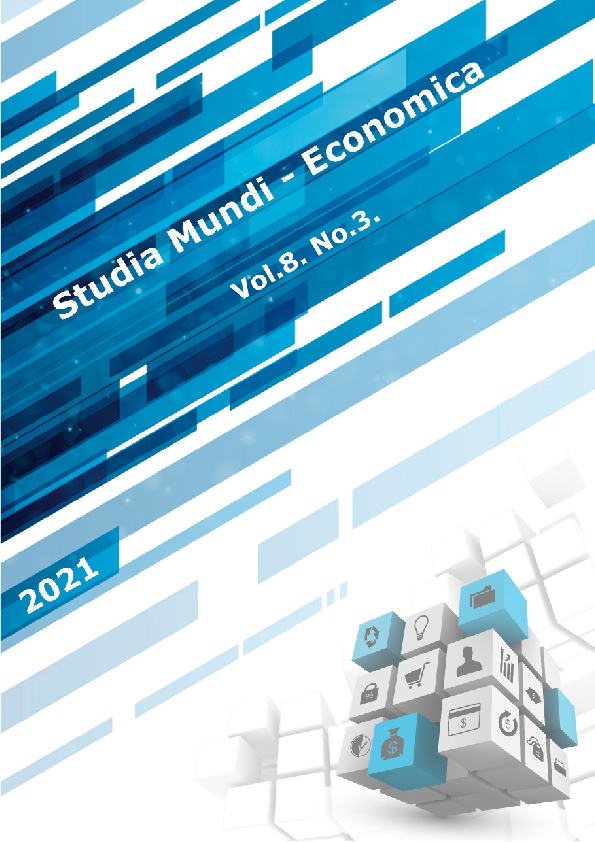Spatial analysis of certain population processes in the Danube wine region
DOI:
https://doi.org/10.18531/Studia.Mundi.2021.08.03.143-155Kulcsszavak:
Danube Wine Region, demography, populationAbsztrakt
Bearing in mind that five of the seven priority initiatives of the Europe 2020 Strategy deal with demographic criteria, I largely think that it is important to present some of the population processes of the Danube wine region, the largest viticulture and wine region in Hungary. I have chosen 10 years between 2010-2019 as the studying period. My aim was to place the examined demographic processes in territorial dimensions and paying attention to spatial contexts. Data from secondary sources were analyzed using the Herfindahl – Hirschman index, location coefficient, and spatial autocorrelation. Studies have shown that the wine region is experiencing population decline and an aging process. However, the spatial structure of this process shows an unbalanced picture that differs from age group to age group. With the help of the methods used, a strong clustering of population process could be detected for the examined age groups. The identified demographic trends could have a serious negative impact on several social and economic phenomena in the future, regarding the labor supply of the wineries operating in the area.
Hivatkozások
ANDORKA R. (2006): Bevezetés a szociológiába. Osiris Kiadó, Budapest, 786 p. ISBN: 9789633898482
ANSELIN, L. (1995): Local Indicators of Spatial Association − LISA Geographical Analysis 27 (2): 93–115.
BAJMÓCY P. (2007): A népességszám változás települési és megyei szintű egyenlőtlenségeinek néhány mérési lehetősége Magyarországon. Tér és Társadalom. 2007 (1) pp. 85–102.
EGRI Z. (2017): Magyarország városai közötti egészségegyenlőtlenségek. In: Területi Statisztika, 57 (5): pp. 537–575; DOI: https://doi.org/10.15196/TS570504
KAPITÁNY B. (szerk.) (2015): Demográfiai fogalomtár. KSH Népességtudományi Kutatóintézet, Budapest, 7., 15. o. ISBN 9789639597365
KOMAREK L. (2012): A magyar ipar makroszintű specializációjának kérdései. PhD értekezés. Nyugat-magyarországi Egyetem Közgazdaságtudományi Kar Széchenyi István Gazdálkodás- és Szervezéstudományok Doktori Iskola, Sopron, pp. 89.
KONCZ G. (2017): Demográfiai folyamatok és humán erőforrások Észak Magyarország vidéki térségeiben In: Koncz, Gábor (szerk.) Mérföldkövek a gyöngyösi agrárkutatásban. Gyöngyös, Magyarország: Károly Róbert Kft. 81 p. pp. 75-81., 7 p.
L. RÉDEI M. (2006): Demográfiai ismeretek. RegInfo Kft, Budapest, 248 p.
LADOS M. (szerk.) (2014): A gazdaságszerkezet és vonzáskörzet alakulása. Universitas Győr Nonprofit Kft, Győr, 279 p.
OBÁDOVICS Cs. (2018): A népesség szerkezete és jövője. In: MONOSTORI J. – ŐRI P. – SPÉDER Zs.: Demográfiai Portré, 2018. KSH NKI Bp., pp. 271-294.
PATIK R. – DEÁK SZ. (2005): Regionális klaszterek feltérképezése a gyakorlatban. In: Tér és Társadalom, 3–4., pp. 139–170. DOI: https://doi.org/10.17649/TET.19.3-4.1023
SPÉDER Zs. (2006): Mintaváltás közben. A gyermekvállalás időzítése az életútban, különös tekintettel a szülő nők iskolai végzettségére és a párkapcsolati státusára. Demográfia, 2006. 43. évf. 2-3. pp. 113-149.
TÓTH G. (2014): Térinformatika a gyakorlatban közgazdászoknak. Miskolci Egyetem, Miskolc. 107 p. ISBN 9789633580592
VAS ZS., LENGYEL I., SZAKÁLNÉ KANÓ I. (2015): Regionális klaszterek és agglomerációs előnyök: feldolgozóipar a magyar városrégiókban. In: Tér és Társadalom (29) 3, pp. 49-72. DOI: https://doi.org/10.17649/TET.29.3.2697
ZSIBÓK ZS. (2020): A nemzeti szintű bruttó hazai termék regionális leskálázása rendszerdinamikai keretben. In: Tér, Gazdaság, Ember 8:(3) pp. 9-26
Letöltések
Megjelent
Folyóirat szám
Rovat
License
Copyright (c) 2021 Krisztián Járdány

This work is licensed under a Creative Commons Attribution-NonCommercial-NoDerivatives 4.0 International License.
A folyóirat Open Access (Gold). Cikkeire a Creative Commons 4.0 standard licenc alábbi típusa vonatkozik: CC-BY-NC-ND-4.0. Ennek értelmében a mű szabadon másolható, terjeszthető, bemutatható és előadható, azonban nem használható fel kereskedelmi célokra (NC), továbbá nem módosítható és nem készíthető belőle átdolgozás, származékos mű (ND). A licenc alapján a szerző vagy a jogosult által meghatározott módon fel kell tüntetni a szerző nevét és a szerzői mű címét (BY).






